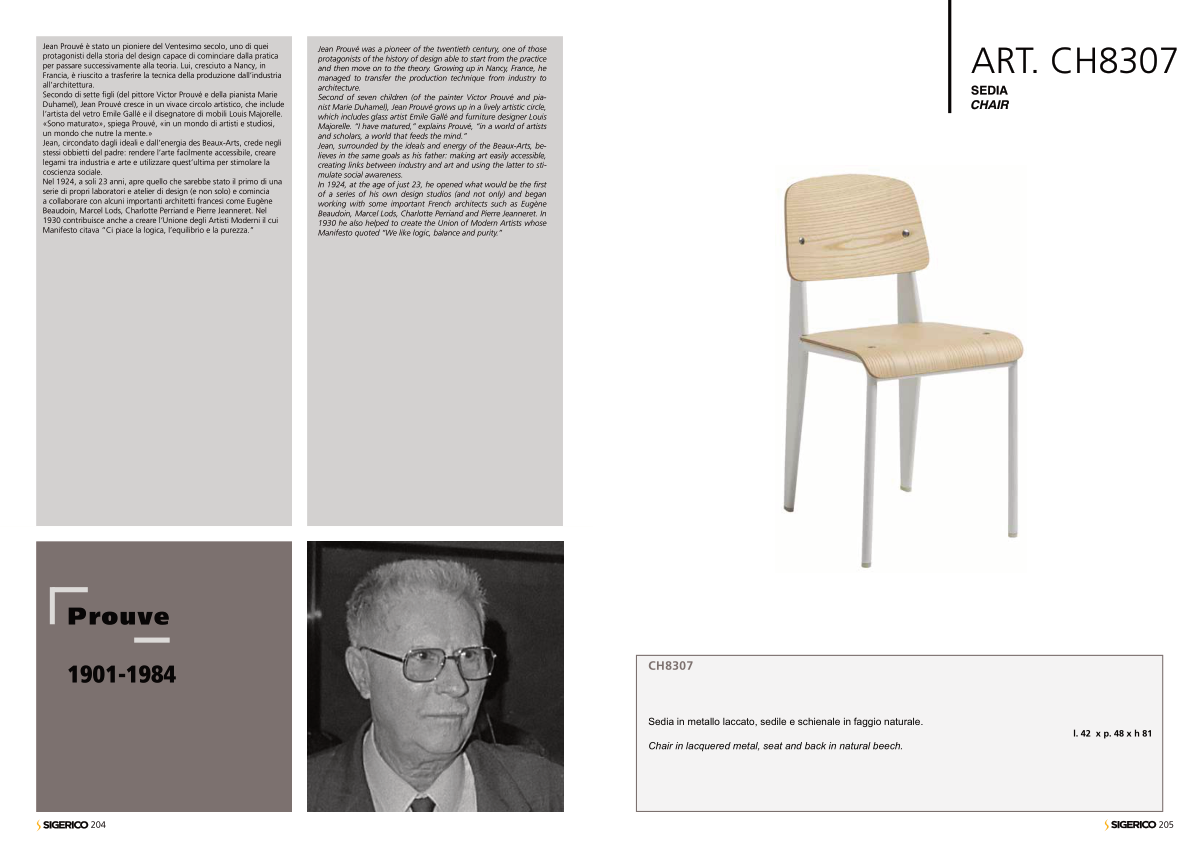Jean Prouvé è stato un pioniere del Ventesimo secolo, uno di quei
protagonisti della storia del design capace di cominciare dalla pratica
per passare successivamente alla teoria. Lui, cresciuto a Nancy, in
Francia, è riuscito a trasferire la tecnica della produzione dall’industria
all’architettura.
Secondo di sette figli (del pittore Victor Prouvé e della pianista Marie
Duhamel), Jean Prouvé cresce in un vivace circolo artistico, che include
l’artista del vetro Emile Gallé e il disegnatore di mobili Louis Majorelle.
«Sono maturato», spiega Prouvé, «in un mondo di artisti e studiosi,
un mondo che nutre la mente.»
Jean, circondato dagli ideali e dall’energia des Beaux-Arts, crede negli
stessi obbietti del padre: rendere l’arte facilmente accessibile, creare
legami tra industria e arte e utilizzare quest’ultima per stimolare la
coscienza sociale.
Nel 1924, a soli 23 anni, apre quello che sarebbe stato il primo di una
serie di propri laboratori e atelier di design (e non solo) e comincia
a collaborare con alcuni importanti architetti francesi come Eugène
Beaudoin, Marcel Lods, Charlotte Perriand e Pierre Jeanneret. Nel
1930 contribuisce anche a creare l’Unione degli Artisti Moderni il cui
Manifesto citava “Ci piace la logica, l’equilibrio e la purezza.”
Jean Prouvé was a pioneer of the twentieth century, one of those
protagonists of the history of design able to start from the practice
and then move on to the theory. Growing up in Nancy, France, he
managed to transfer the production technique from industry to
architecture.
Second of seven children (of the painter Victor Prouvé and pia-
nist Marie Duhamel), Jean Prouvé grows up in a lively artistic circle,
which includes glass artist Emile Gallé and furniture designer Louis
Majorelle. “I have matured,” explains Prouvé, “in a world of artists
and scholars, a world that feeds the mind.”
Jean, surrounded by the ideals and energy of the Beaux-Arts, be-
lieves in the same goals as his father: making art easily accessible,
creating links between industry and art and using the latter to sti-
mulate social awareness.
In 1924, at the age of just 23, he opened what would be the first
of a series of his own design studios (and not only) and began
working with some important French architects such as Eugène
Beaudoin, Marcel Lods, Charlotte Perriand and Pierre Jeanneret. In
1930 he also helped to create the Union of Modern Artists whose
Manifesto quoted “We like logic, balance and purity.”
Prouve
1901-1984
ART. CH8307
SEDIA
CHAIR
Sedia in metallo laccato, sedile e schienale in faggio naturale.
Chair in lacquered metal, seat and back in natural beech.
l. 42 x p. 48 x h 81
205
204
CH8307


